
(h)
Measurement of the length for dimension (h).
Answer to Problem 14A
Measurement of the length is
Explanation of Solution
Given:
The line is given below:

Concept used:
Length is measured with the help of inch scale.
Calculation:
Attached the inch scale over given length.
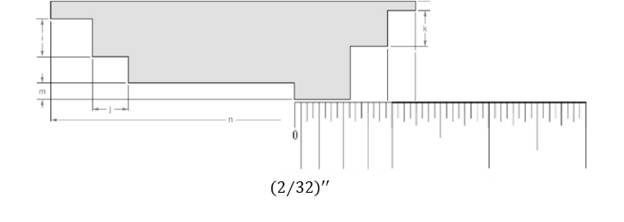
From the above figure, the length of the line can be measured as follows:
Thus, measurement of the length is
Conclusion:
Measurement of the length is
(i)
Measurement of the length for dimension (i).
Answer to Problem 14A
Measurement of the length is
Explanation of Solution
Given:
The line is given below:

Concept used:
Length is measured with the help of inch scale.
Calculation:
Attached the inch scale over given length.

From the above figure, the length of the line can be measured as follows:
Thus, measurement of the length is
Conclusion:
Measurement of the length is
(j)
Measurement of the length for dimension (j).
Answer to Problem 14A
Measurement of the length is
Explanation of Solution
Given:
The line is given below:

Concept used:
Length is measured with the help of inch scale.
Calculation:
Attached the inch scale over given length.
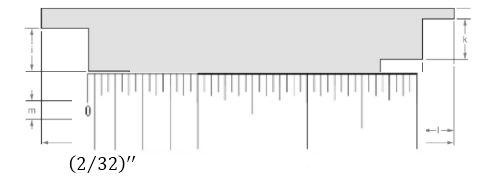
From the above figure, the length of the line can be measured as follows:
Thus, measurement of the length is
Conclusion:
Measurement of the length is
(k)
Measurement of the length for dimension (k).
Answer to Problem 14A
Measurement of the length is
Explanation of Solution
Given:
The line is given below:

Concept used:
Length is measured with the help of inch scale.
Calculation:
Attached the inch scale over given length.
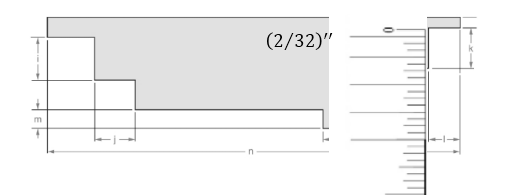
From the above figure, the length of the line can be measured as follows:
Thus, measurement of the length is
Conclusion:
Measurement of the length is
(l)
Measurement of the length for dimension (l).
Answer to Problem 14A
Measurement of the length is
Explanation of Solution
Given:
The line is given below:

Concept used:
Length is measured with the help of inch scale.
Calculation:
Attached the inch scale over given length.

From the above figure, the length of the line can be measured as follows:
Thus, measurement of the length is
Conclusion:
Measurement of the length is
(m)
Measurement of the length for dimension (m).
Answer to Problem 14A
Measurement of the length is
Explanation of Solution
Given:
The line is given below:

Concept used:
Length is measured with the help of inch scale.
Calculation:
Attached the inch scale over given length.
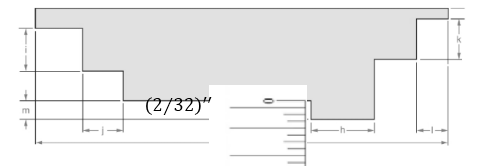
From the above figure, the length of the line can be measured as follows:
Thus, measurement of the length is
Conclusion:
Measurement of the length is
(n)
Measurement of the length for dimension (n).
Answer to Problem 14A
Measurement of the length is
Explanation of Solution
Given:
The line is given below:

Concept used:
Length is measured with the help of inch scale.
Calculation:
Attached the inch scale over given length.
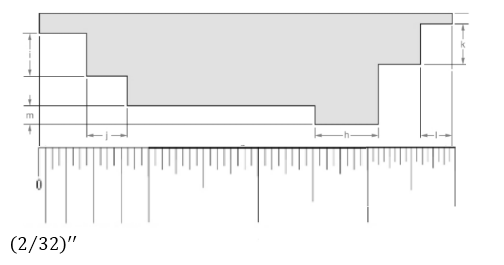
From the above figure, the length of the line can be measured as follows:
Thus, measurement of the length is
Conclusion:
Measurement of the length is
Want to see more full solutions like this?
Chapter 30 Solutions
Mathematics For Machine Technology
- 3. Use Laplace transforms to solve the semi-infinite wave problem a) utt = c²urr, x>0,t> 0, u(x, 0) = u(x, 0) = 0, u(0,t) = f(t), lim u(x,t) = 0. PIXarrow_forwarda/ Solved by de Alembert utt = c²uxx u(x, 0) = f(x) ut (x, 0) = g(x) f and y are given by where CI C = 1 f(x) = 3 e-x² ,д (x)=0 2 C=3 و f(x)=0 9 9CX = Xe-Xarrow_forwardpls help ASAParrow_forward
- Q/solved by d'Alembert:- utt =uxx u (X10) = f(x) u + (×10) = 0arrow_forwardLet U = = {0, 1, 2, 3, 4, 5, 6, 7, 8, 9, 10} be the universal set. Use the following subsets of U to determine if each statement is true or false. A = {0, 1, 3, 5} and B = {2, 3, 4, 5,9} • true AUB = {3,5} • true A - B = {0, 1} ⚫ true B = {0, 1, 6, 7, 8, 10} ⚫ true An Bc • true (AUB) = {0,1} = {0, 1, 2, 4, 6, 7, 8, 9, 10} ⚫ true A x B = {(0,2), (1, 3), (3, 4), (5,5)}arrow_forwardLet A = {x Z | x=0 (mod 6)} and B = {x = Z | x = 0 (mod 9)}. Which of the following sentences describes the set relationship between A and B ? *Keep in mind that Ç means proper subset. AÇ B BÇA A = B AnB = 0 none of thesearrow_forward
- Let U = {0, 1, 2, 3, 4, 5, 6, 7, 8, 9, 10} be the universal set. Let A = {0, 1, 2, 3, 9} and B = {2, 3, 4, 5, 6}. Select all elements in An B. 2 3 4 5 18 7 8 9 ☐ 10arrow_forwardLet U = {0, 1, 2, 3, 4, 5, 6, 7, 8, 9, 10} be the universal set. Let A = {0, 1, 2, 3, 9} and B = {2, 3, 4, 5, 6}. Select all elements in An B. 1 2 ✓ 3 + 5 10 7 > 00 ☐ 10arrow_forwardComplete the missing components of the know-show table to prove the statement be- low. Alternatively, you may construct your own table to prove the statement using the strategy that comes to your mind. Statement: For all integers n, if n is odd, then n³ + 4n+5 is even. Step Know P P1 n³ is odd P2 P3 5 is odd 0 Step Reason Hypothesis Product of even and odd is even 5 = 2(2)+1 Show Reasonarrow_forward
 Mathematics For Machine TechnologyAdvanced MathISBN:9781337798310Author:Peterson, John.Publisher:Cengage Learning,
Mathematics For Machine TechnologyAdvanced MathISBN:9781337798310Author:Peterson, John.Publisher:Cengage Learning, Algebra: Structure And Method, Book 1AlgebraISBN:9780395977224Author:Richard G. Brown, Mary P. Dolciani, Robert H. Sorgenfrey, William L. ColePublisher:McDougal LittellAlgebra & Trigonometry with Analytic GeometryAlgebraISBN:9781133382119Author:SwokowskiPublisher:Cengage
Algebra: Structure And Method, Book 1AlgebraISBN:9780395977224Author:Richard G. Brown, Mary P. Dolciani, Robert H. Sorgenfrey, William L. ColePublisher:McDougal LittellAlgebra & Trigonometry with Analytic GeometryAlgebraISBN:9781133382119Author:SwokowskiPublisher:Cengage Trigonometry (MindTap Course List)TrigonometryISBN:9781305652224Author:Charles P. McKeague, Mark D. TurnerPublisher:Cengage Learning
Trigonometry (MindTap Course List)TrigonometryISBN:9781305652224Author:Charles P. McKeague, Mark D. TurnerPublisher:Cengage Learning Elementary Geometry For College Students, 7eGeometryISBN:9781337614085Author:Alexander, Daniel C.; Koeberlein, Geralyn M.Publisher:Cengage,
Elementary Geometry For College Students, 7eGeometryISBN:9781337614085Author:Alexander, Daniel C.; Koeberlein, Geralyn M.Publisher:Cengage,




